 W
WA seal is a device for making an impression in wax, clay, paper, or some other medium, including an embossment on paper, and is also the impression thus made. The original purpose was to authenticate a document, or to prevent interference with a package or envelope by applying a seal which had to be broken to open the container.
 W
WTwo main types of seals were used in the Ancient Near East, the stamp seal and the cylinder seal. Stamp seals first appeared in ‘administrative’ contexts in central and northern Mesopotamia in the seventh millennium and were used exclusively until the fifth millennium. Cylinder seals appeared first around 3600 bc in southern Mesopotamia and south-western Iran. They gradually replaced stamp seals, becoming the tool of a rising class of bureaucrats in the early stages of state formation. Even though stamp seals were still produced in the third and second millennia, cylinder seals predominated. In the first millennium, stamp seals made a strong comeback and eventually replaced cylinder seals entirely.
 W
WA cash seal is a type of seal used as an anti-counterfeiting measure on paper money or banknotes. The cash seal first appeared during the Song dynasty in China.
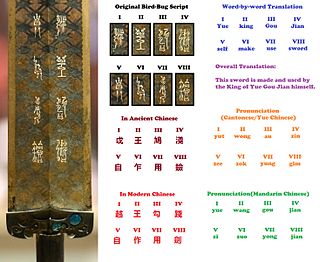 W
WBird-worm seal script is a type of ancient seal script originating in China.
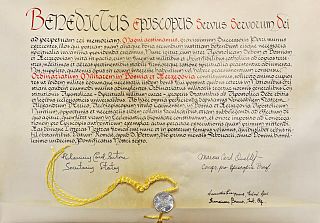 W
WA bulla is an inscribed clay or soft metal or bitumen or wax token used in commercial and legal documentation as a form of authentication and for tamper-proofing whatever is attached to it.
 W
WChop marks on coins are Chinese characters stamped or embossed onto coins by merchants in order to validate the weight, authenticity and silver content of the coin. Depending on particular technique coins said to have been "chopmarked", "countermarked" and "counterstamped".
 W
WThe Crusader States, also known as Outremer, were four Roman Catholic realms in the Middle East that lasted from 1098 to 1291. These feudal polities were created by the Latin Catholic leaders of the First Crusade through conquest and political intrigue. The four states were the County of Edessa (1098–1150), the Principality of Antioch (1098–1287), the County of Tripoli (1102–1289), and the Kingdom of Jerusalem (1099–1291). The kingdom of Jerusalem covered what is now Israel and Palestine, the West Bank, the Gaza Strip, and adjacent areas. The other northern states covered what are now Syria, south-eastern Turkey, and Lebanon. The description "Crusader states" can be misleading, as from 1130 very few of the Frankish population were crusaders. The term Outremer, used by medieval and modern writers as a synonym, is derived from the French for overseas.
 W
WA cylinder seal is a small round cylinder, typically about one inch in length, engraved with written characters or figurative scenes or both, used in ancient times to roll an impression onto a two-dimensional surface, generally wet clay. According to some sources, cylinder seals were invented around 3500 BC in the Near East, at the contemporary sites of Uruk in southern Mesopotamia and slightly later at Susa in south-western Iran during the Proto-Elamite period, and they follow the development of stamp seals in the Halaf culture or slightly earlier. They are linked to the invention of the latter's cuneiform writing on clay tablets. Other sources, however, date the earliest cylinder seals to a much earlier time, to the Late Neolithic period, hundreds of years before the invention of writing. They were used as an administrative tool, a form of signature, as well as jewelry and as magical amulets; later versions would employ notations with Mesopotamian cuneiform. In later periods, they were used to notarize or attest to multiple impressions of clay documents. Graves and other sites housing precious items such as iron, silver, beads, and gemstones often included one or two cylinder seals, as honorific grave goods.
 W
WAn engraved gem, frequently referred to as an intaglio, is a small and usually semi-precious gemstone that has been carved, in the Western tradition normally with images or inscriptions only on one face. The engraving of gemstones was a major luxury art form in the Ancient world, and an important one in some later periods.
 W
WA golden bull or chrysobull was a decree issued by Byzantine Emperors and later by monarchs in Europe during the Middle Ages and Renaissance, most notably by the Holy Roman Emperors. The term was originally coined for the golden seal, attached to the decree, but came to be applied to the entire decree. Such decrees were known as golden bulls in western Europe and chrysobullos logos, or chrysobulls, in the Byzantine Empire.
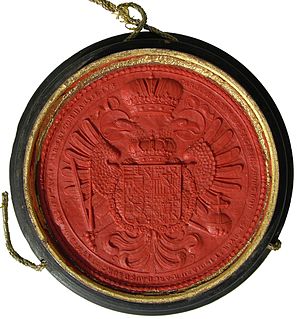 W
WA great seal is a seal used by a head of state, or someone authorised to do so on their behalf, to confirm formal documents, such as laws, treaties, appointments and letters of dispatch. It was and is used as a guarantee of the authenticity of the most important and solemn records and documents.
 W
WA guksae or oksae (국새,옥새) is an official seal made for used in lieu of signatures in personal documents, office paperwork, contracts, art, or any item requiring acknowledgment or authorship in South Korea. Guksae is carved with characters called injang. With the establishment of the South Korean state in 1948, its government created a new state seal, or guksae. It is used in promulgation of constitution, designation of cabinet members and ambassadors, conference of national orders and important diplomatic documents.
 W
WThis list of oldest heraldry aims to include the oldest documented, non-attributed heraldic achievements for individuals, families, locations or institutions.
 W
WThe impression seal is a common seal that leaves an impression, typically in clay and less often in sealing wax. In antiquity they were common, largely because they served to authenticate legal documents, such as tax receipts, contracts, wills and decrees. They are favorite topics of study because they were usually carved with important "themes" of the society that produced them, rather than with an ordinary signature.
 W
WThe Kagome crest or Kagome mon is a star-shaped emblem related to the kagome lattice design. The Kagome mon can be depicted as, either, a six-pointed star and as an eight-pointed star :The six-pointed star version is composed of two interlocking equilateral triangles, similar to/interchangeable with the Hindu Shatkona, which represents the union between opposites, similar to Yin and yang. The eight-pointed star version is composed of two interlocking squares, similar to/interchangeable with the Hindu Star of Lakshmi.
 W
WLMLK seals are ancient Hebrew seals stamped on the handles of large storage jars first issued in the reign of King Hezekiah and discovered mostly in and around Jerusalem. Several complete jars were found in situ buried under a destruction layer caused by Sennacherib at Lachish. While none of the original seals have been found, some 2,000 impressions made by at least 21 seal types have been published. The iconography of the two and four winged symbols are representative of royal symbols whose meaning "was tailored in each kingdom to the local religion and ideology".
 W
WThe Luther seal or Luther rose is a widely recognized symbol for Lutheranism. It was the seal that was designed for Martin Luther at the behest of John Frederick of Saxony in 1530, while Luther was staying at the Coburg Fortress during the Diet of Augsburg. Lazarus Spengler, to whom Luther wrote his interpretation below, sent Luther a drawing of this seal. Luther saw it as a compendium or expression of his theology and faith, which he used to authorize his correspondence. Luther informed Philipp Melanchthon on September 15, 1530, that the Prince had personally visited him in the Coburg fortress and presented him with a signet ring, presumably displaying the seal.
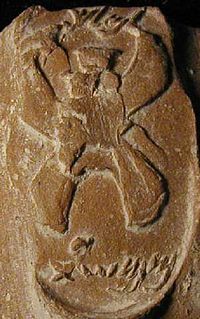 W
WMMST is a word written in Paleo-Hebrew abjad script. It appears exclusively on LMLK seal inscriptions, seen in archaeological findings from the ancient Kingdom of Judah, whose meaning has been the subject of continual controversy.
 W
WA papal bull is a type of public decree, letters patent, or charter issued by a pope of the Catholic Church. It is named after the leaden seal (bulla) that was traditionally appended to the end in order to authenticate it.
 W
WThe Pashupati Seal, is a steatite seal which was uncovered in the 1928–29 Archaeological Survey of India excavations of the Indus Valley Civilisation ("IVC") site of Mohenjo-daro, then in the British Raj, and now in Pakistan. The seal depicts a seated figure that is possibly tricephalic. The seated figure has been thought to be ithyphallic, an interpretation that has been questioned by many, but was still held by the IVC specialist Jonathan Mark Kenoyer in a publication of 2003. The man has a horned headdress and is surrounded by animals. He may represent a horned deity.
 W
WPlica is a term used in sigillography and related archival contexts for a reinforcement of the lower edge of a charter or deed, produced by folding up the bottom of the sheet of parchment to achieve a double thickness.
 W
WA privy seal refers to the personal seal of a reigning monarch, used for the purpose of authenticating official documents of a much more personal nature. This is in contrast with that of a great seal, which is used for documents of greater importance.
 W
WThe Pylos Combat Agate is an Minoan sealstone of the Mycenaean era, likely manufactured in Late Minoan Crete. It depicts two warriors engaged in hand-to-hand combat. It was discovered in the Griffin Warrior Tomb near the Palace of Nestor in Pylos and is dated to about 1450 BCE. The seal has come to be known as Pylos Combat Agate.
 W
WThe Ring of the Fisherman, also known as the Piscatory Ring, is an official part of the regalia worn by the Pope, who is head of the Catholic Church and successor of Saint Peter, who was a fisherman by trade. It used to feature a bas-relief of Peter fishing from a boat, a symbolism derived from the tradition that the apostles were "fishers of men". The Fisherman's Ring is a signet used until 1842 to seal official documents signed by the Pope. Since at least the Middle Ages it has been a tradition for Catholics meeting the Pope to show their devotion by kissing the ring.
 W
WThe rota is one of the symbols used by the Pope to authenticate documents such as papal bulls. It is a cross inscribed in two concentric circles. Pope Leo IX was the first pope to use it.
 W
WScarabs were popular amulets and impression seals in ancient Egypt. They survive in large numbers and, through their inscriptions and typology, they are an important source of information for archaeologists and historians of the ancient world. They also represent a significant body of ancient art.
 W
WIn the law, a seal affixed to a contract or other legal instrument has had special legal significance at various times in the jurisdictions that recognise it. In the courts of common law jurisdictions, a contract which was sealed was treated differently from other written contracts, although this practice gradually fell out of favour in most of these jurisdictions in the 19th and early 20th century. The legal term seal arises from the wax seal used throughout history for authentication.
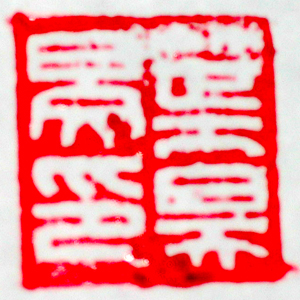 W
WA seal, in an East and Southeast Asian context, is a general name for printing stamps and impressions thereof which are used in lieu of signatures in personal documents, office paperwork, contracts, art, or any item requiring acknowledgement or authorship. On documents they were usually used to print an impression using a pigmented paste or ink, unlike the wax impression commonly used in Europe. The process started in China and soon spread across East Asia. China, Japan and Korea currently use a mixture of seals and hand signatures, and, increasingly, electronic signatures.
 W
WThe Seal of Charlotte was first established during the tenure of mayor Charles A. Bland, and was designed over a period stretching from 1911 to 1915. It was adopted on the city's first flag in 1929, which still remains in use today. This seal itself was rescinded at an unknown date and replaced with the present one. In its current form, it is the city's logo on a golden seal, and it is used to authorize executive documents from the city, including, but not limited to, mayoral proclamations and resolutions from the city council. Based on the adoption of the crown logo in 1985 with the current flags, it is possible the current seal could have been adopted at that time as well, however, this is unknown, and city archives from the era do not depict any seal.
 W
WThe Seal of Mindaugas is a medieval seal affixed to the October 1255 act by Mindaugas, King of Lithuania, granting Selonia to the Teutonic Knights. An academic debate is ongoing to determine authenticity of the act and the seal as they might have been forged by the Knights. If it is authentic then the seal is the only surviving contemporary depiction of Mindaugas. As the most important surviving artifact from Mindaugas' times, the seal was a centerpiece of a special exhibition organized by the National Museum of Lithuania in 2003 to commemorate the 750th anniversary of Mindaugas' coronation.
 W
WThe Seal of Muhammad is one of the relics of Muhammad kept in the Topkapı Palace by the Ottoman Sultans as part of the Sacred Relics collection.
 W
WThe Seal of Solomon is the signet ring attributed to King Solomon in medieval Arabic tradition, from which it developed in Islamic and Jewish mysticism and in Western occultism. It is the predecessor of the Star of David, which became the symbol of the Jewish people in modern times.
 W
WSeal script is an ancient style of writing Chinese characters that was common throughout the latter half of the 1st millennium BC. It evolved organically out of the Zhou dynasty bronze script. The Qin variant of seal script eventually became the standard, and was adopted as the formal script for all of China during the Qin dynasty. It was still widely used for decorative engraving and seals in the Han dynasty. The literal translation of the Chinese name for seal script, 篆書, is decorative engraving script, a name coined during the Han dynasty, which reflects the then-reduced role of the script for the writing of ceremonial inscriptions.
 W
WSeal knob, sometimes also seal sculpture, refers to carving or small decorative reliefwork at the top or side of a seal. The associated carving technique is called knob carving, a traditional technique that originated in ancient China and later spread to other East Asian countries, including Japan and Korea.
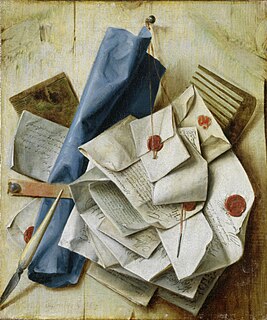 W
WSealing wax is a wax material of a seal which, after melting, hardens quickly forming a bond that is difficult to separate without noticeable tampering. Wax is used to verify something such as a document is unopened, to verify the sender's identity, for example with a signet ring, and as decoration. Sealing wax can be used to take impressions of other seals. Wax was used to seal letters close and later, from about the 16th century, envelopes. Before sealing wax, the Romans used bitumen for this purpose.
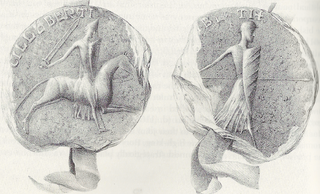 W
WSigillography, also known by its Greek-derived name, sphragistics, is the scholarly discipline that studies the wax, lead, clay, and other seals used to authenticate archival documents. It investigates not only aspects of the artistic design and production of seals, but also considers the legal, administrative and social contexts in which they were used. It has links to diplomatics, heraldry, social history, and the history of art, and is regarded as one of the auxiliary sciences of history. A student of seals is known as a sigillographer.
 W
WThe stamp seal is a carved object, usually stone, first made in the 4th millennium BC, and probably earlier. They were used to impress their picture or inscription into soft, prepared clay.
 W
WThe Vishnu Nicolo Seal is a "finely engraved" oval agate seal from the Gandhara region, dated to the 4th century CE. Since 1892 it has been in the British Museum.
 W
WA wax jack is a device used to hold a taper of sealing wax intended to create sealings on documents.
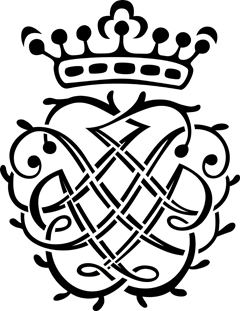 W
W W
W W
W W
W W
W W
W W
W W
W W
W